Tillandsia plagiotropica
Click thumbnails for full size, scaled to a new window.
Tillandsia plagiotropica
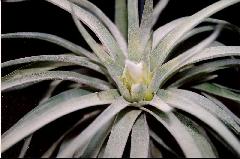
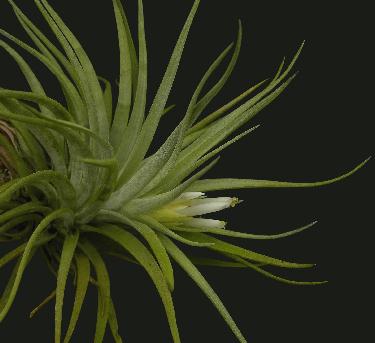
| Ken Woods 06/09. |
Chris Larson 06/11. |
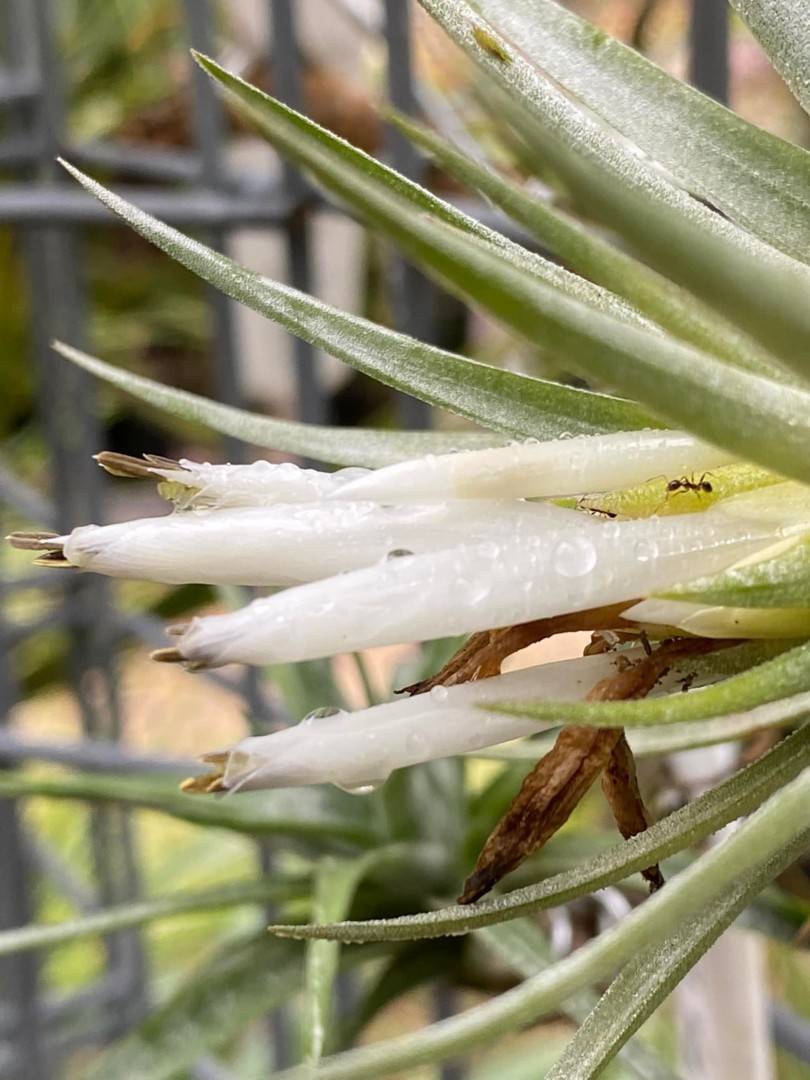
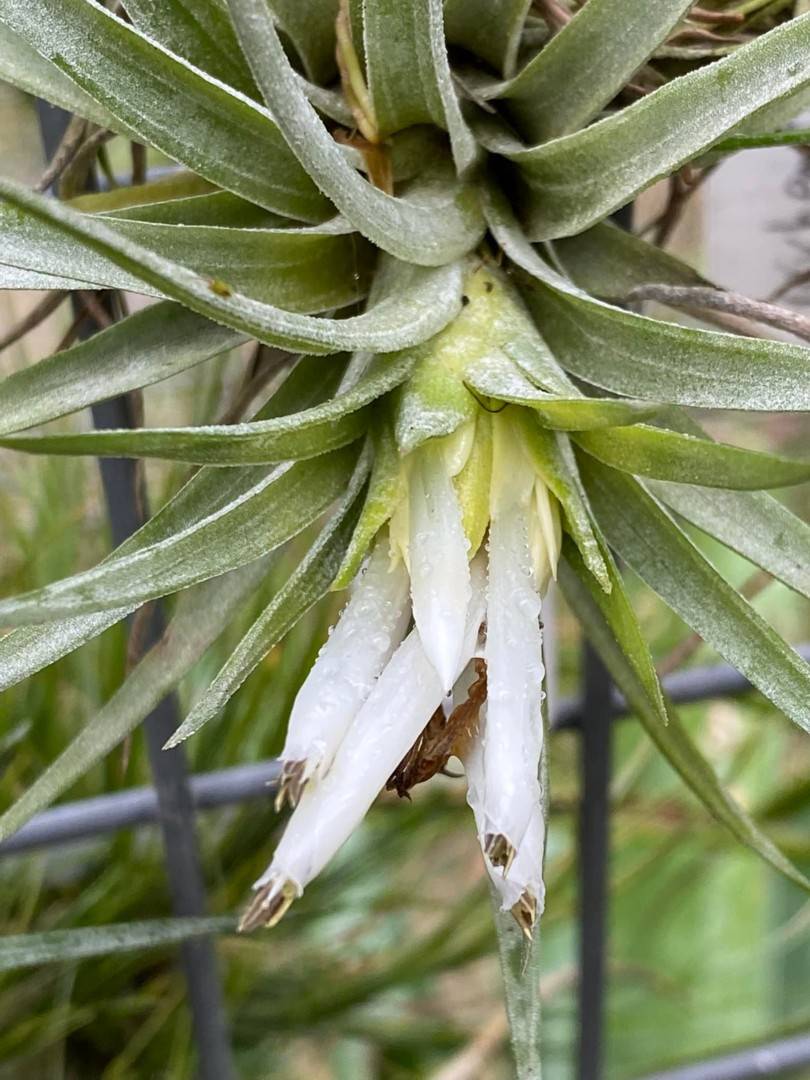
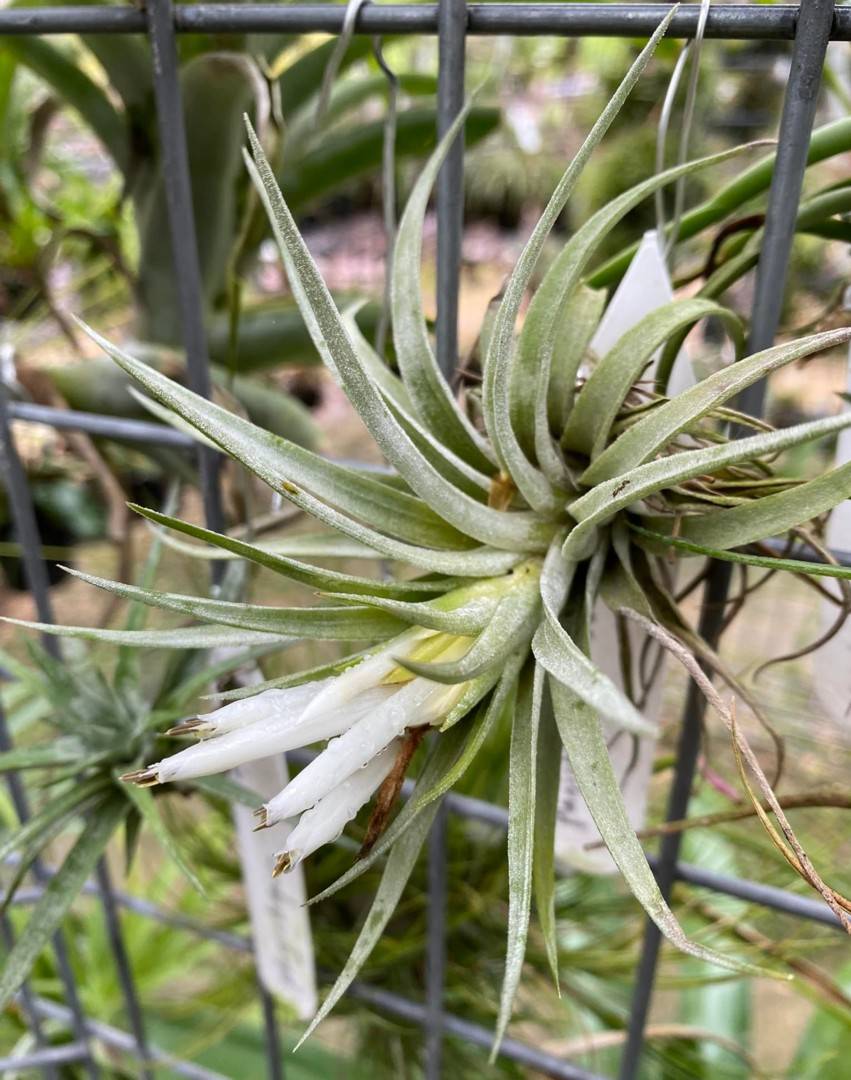
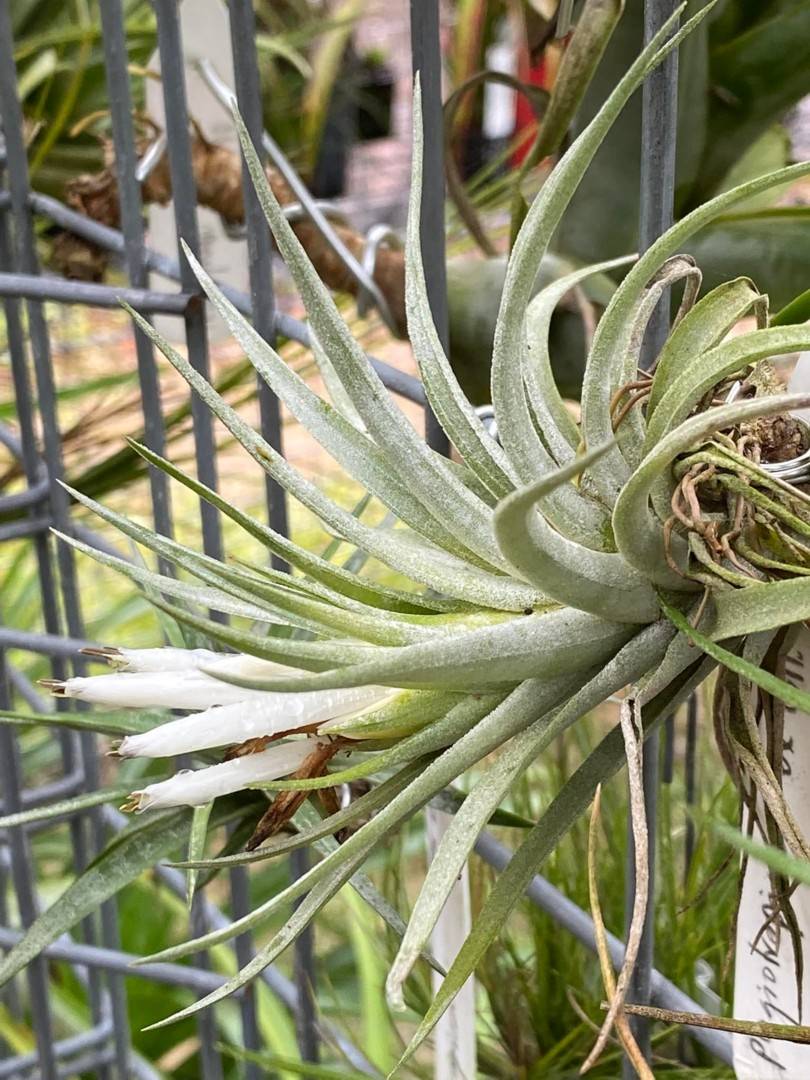 Dale Dixon ... "Tillandsia plagiotropica (subg. Tillandsia) is endemic to El Salvador and is found in cloud forests on lake margins at elevations between 1300-1640 m.
Dale Dixon ... "Tillandsia plagiotropica (subg. Tillandsia) is endemic to El Salvador and is found in cloud forests on lake margins at elevations between 1300-1640 m.
The species epithet refers to the mostly horizontally oriented main axis of the individual rosettes. It is derived from the Greek 'plagios' meaning slanting or sideways and '-tropic' meaning 'turned toward' or 'with an orientation toward'. In the case of this species it refers to the plants growing more or less divergent from the vertical.
Prior to building the #TillHouse, my plants were reasonably exposed on the west facing deck of our house. They struggled, so when they were moved to their new abode I tried to provide conditions similar to their natural habitat. It's a species of cloud forests and must therefore prefer a more humid environment.
My plants are suspended on aluminium craft wire and hung in amongst other Tillandsias in a very sheltered position on a northeast facing wall. In this position they get filtered morning sunlight but protection from harsh sun. But more importantly they seem to benefit from the microclimate provided by the other larger plants that surround them. I last flowered this species in December 2018 so it's been a long wait for the plants to recover."
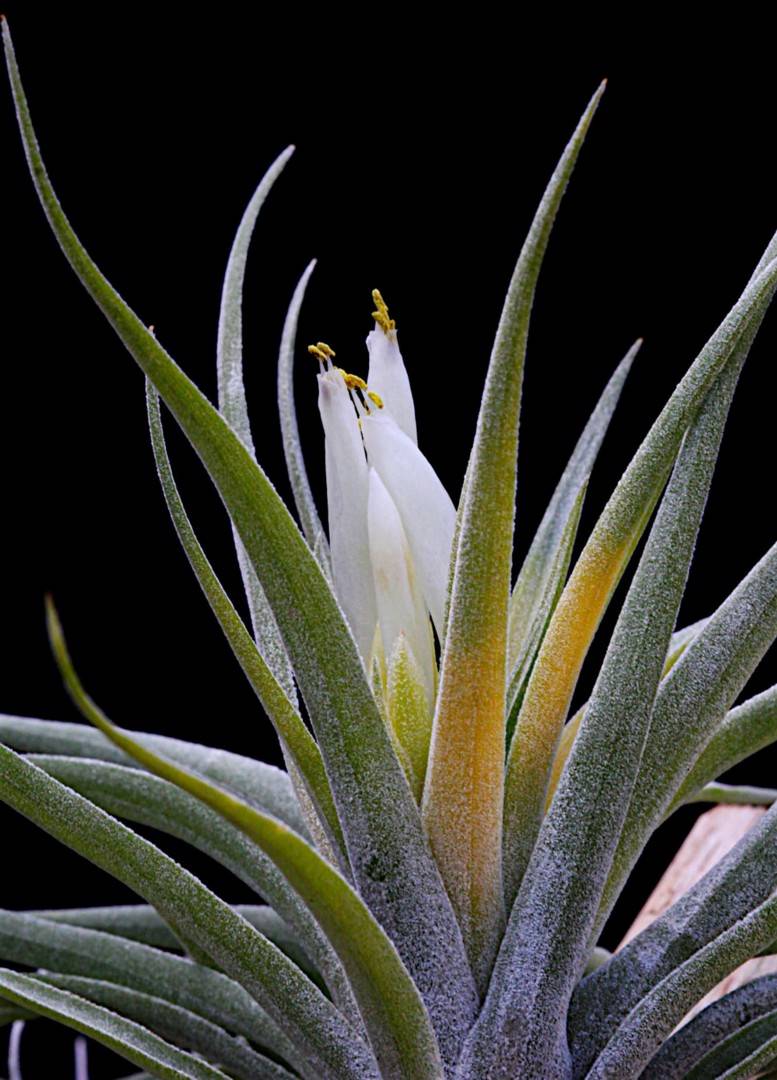
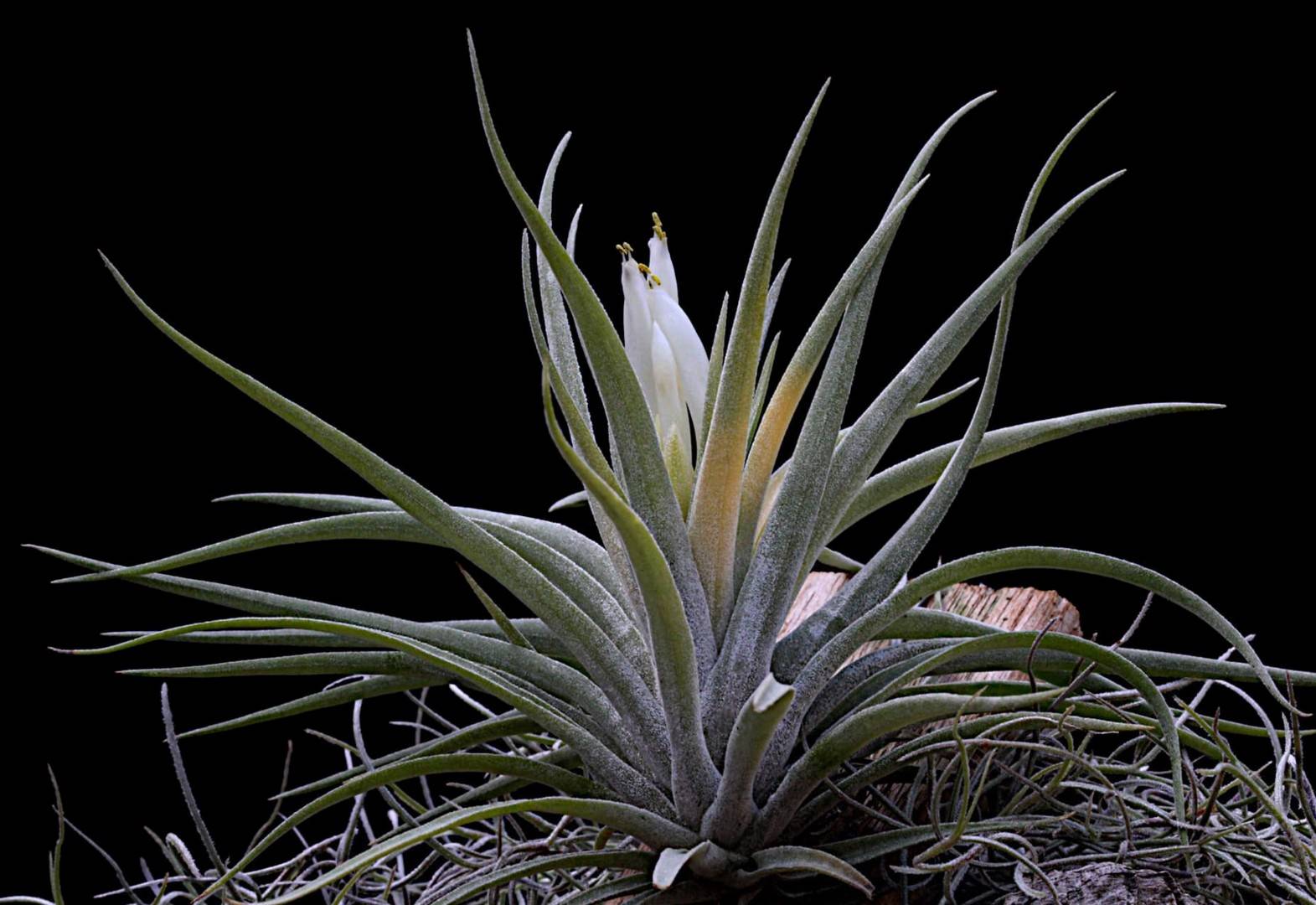
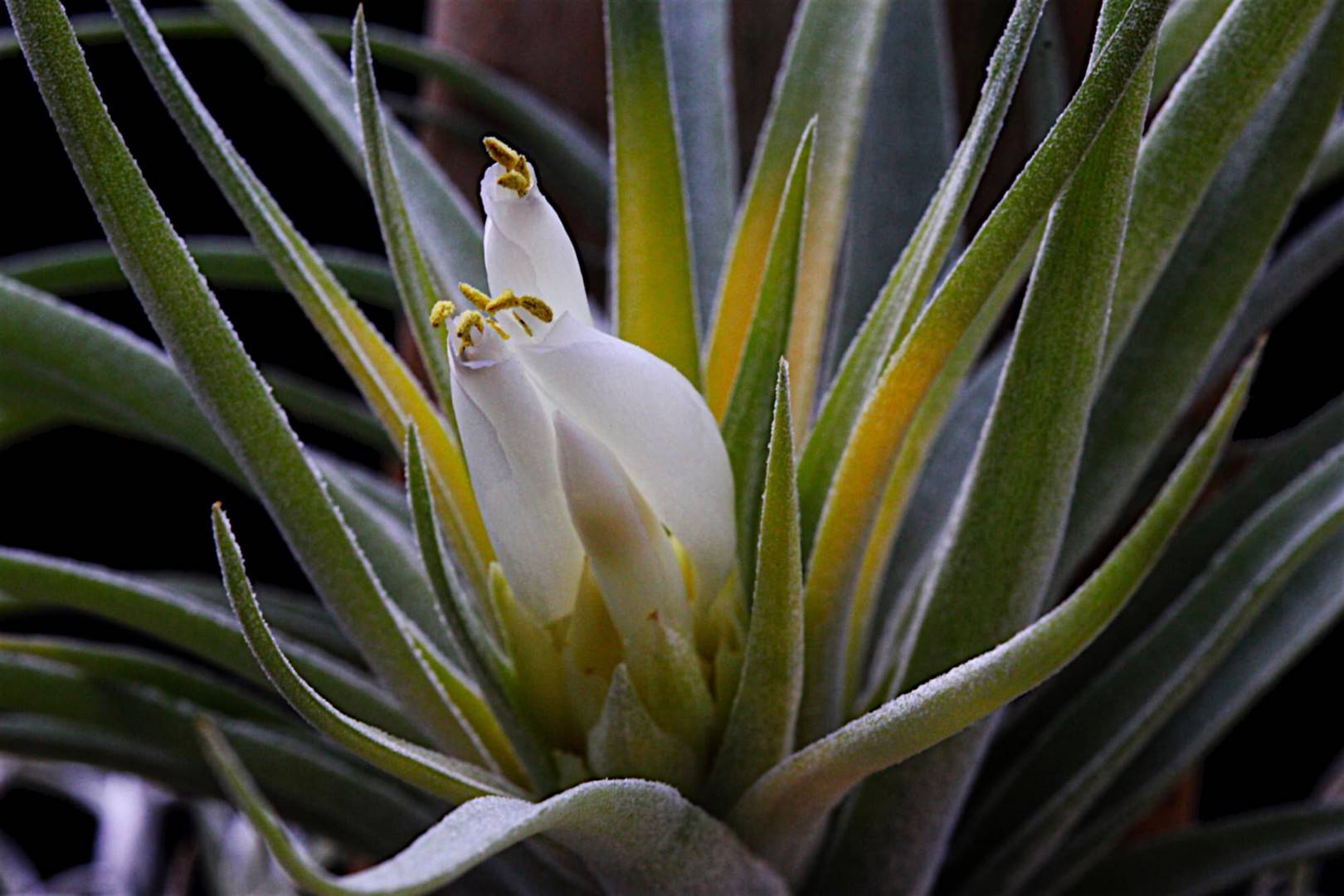
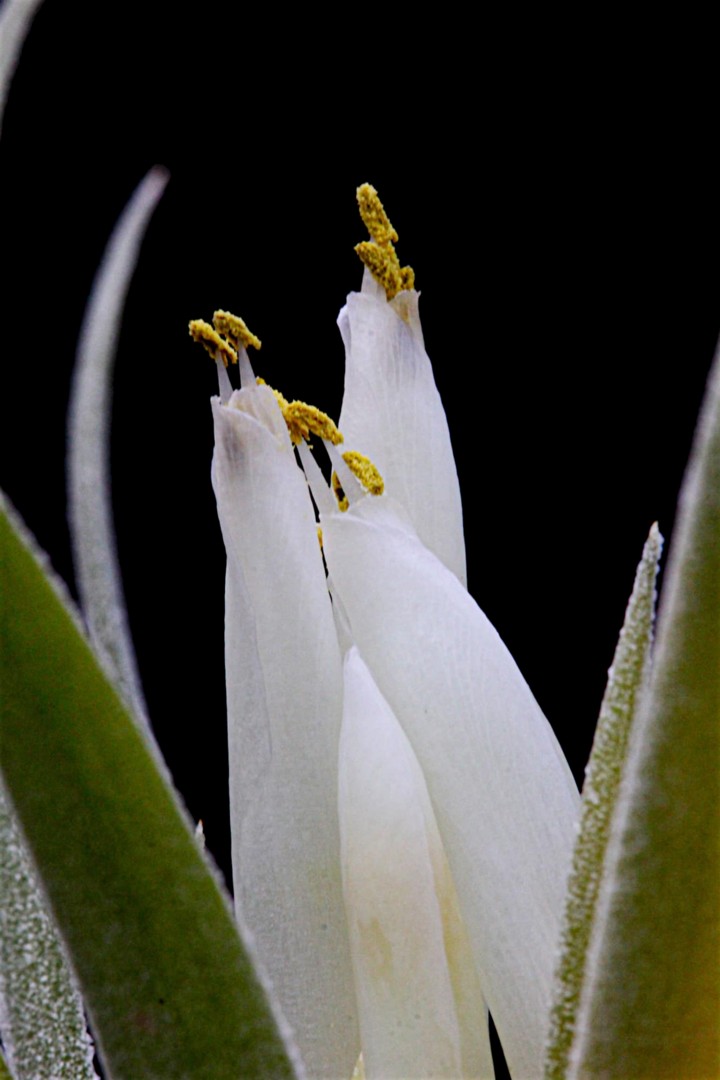
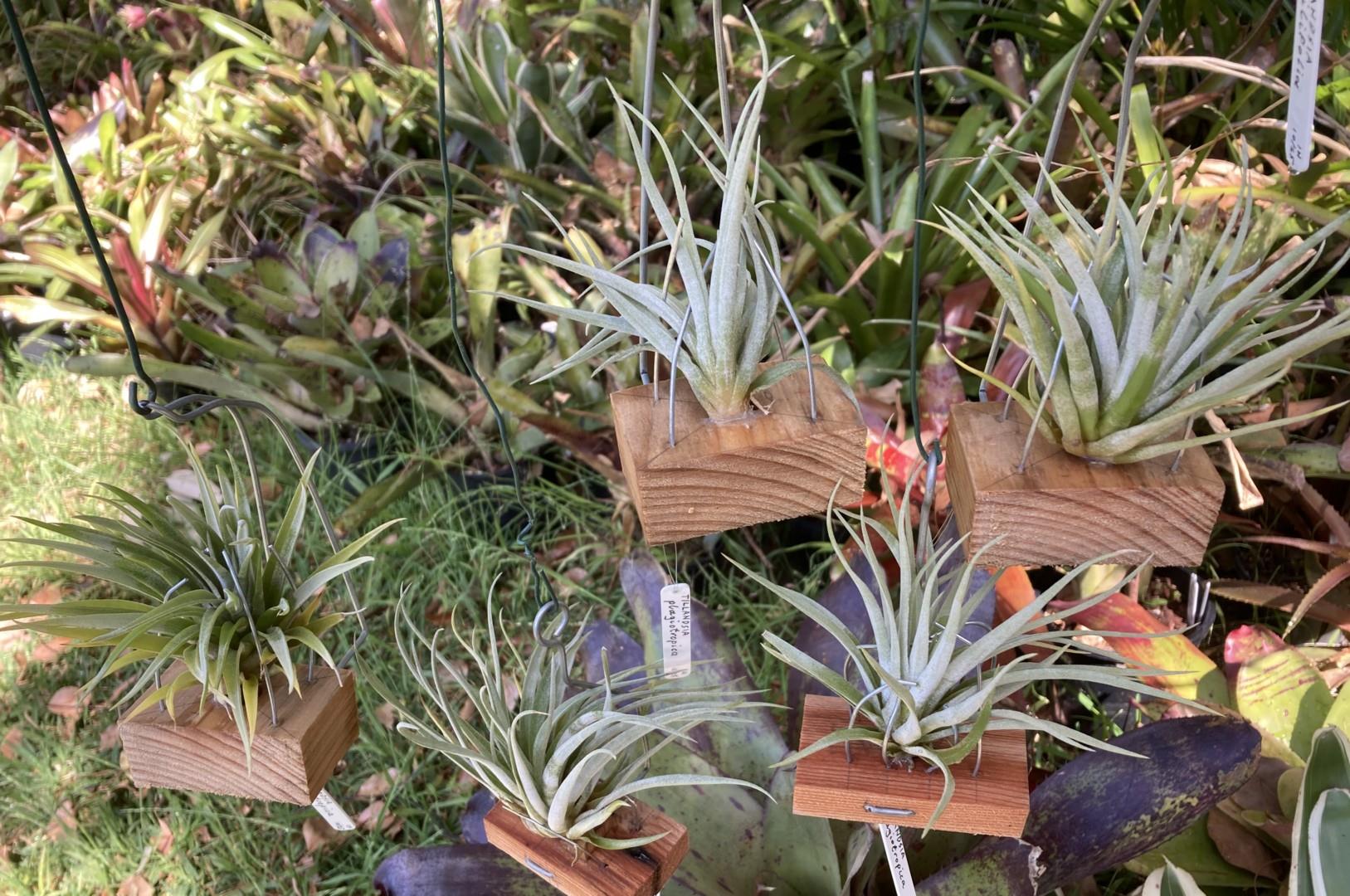
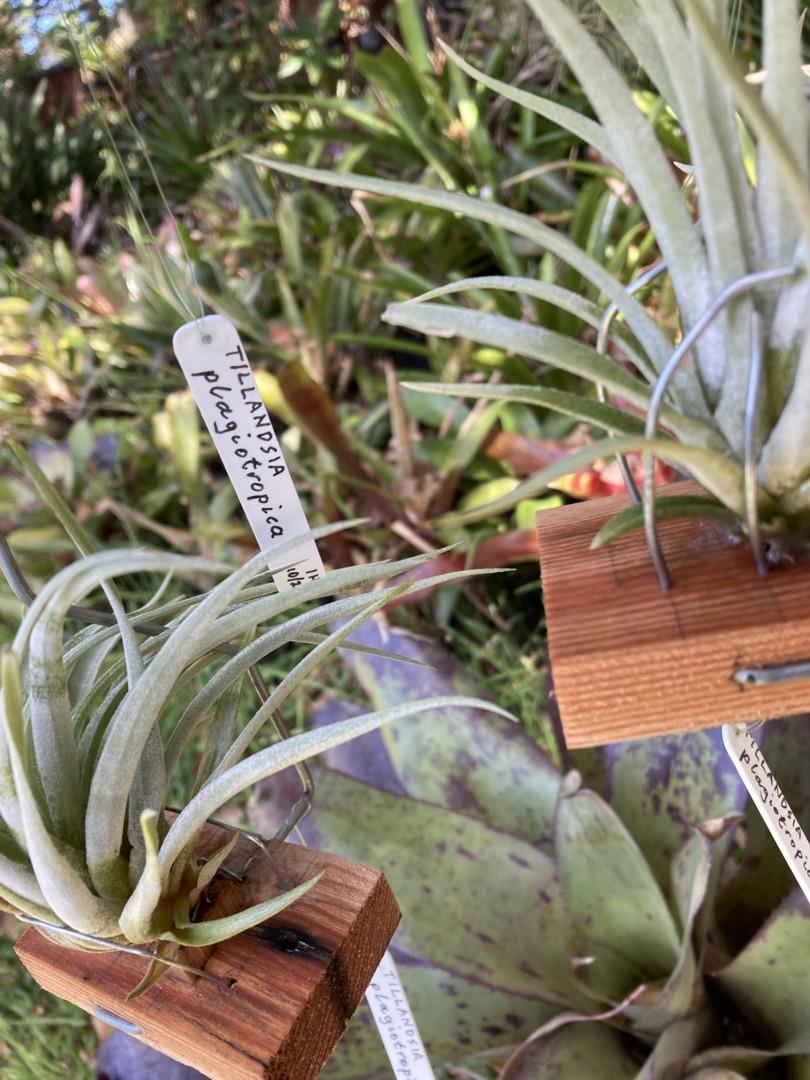
Tillandsia plagiotropica Rohweder. Senckenbergiana 34: 112, pI. 1, fig. 1. 1953.
Desc from S&D p1006
Plant stemless or short-caulescent, rarely branched, 8-10 cm high.
Leaves subfasciculate-rosulate, 10(-15)cm long, secund-recurved, thick, rigid, covered with coarse subspreading scales;
Sheaths obscure, 20 mm long, 15 mm wide, nearly flat;
Blades narrowly triangular, subulate toward apex, pungent.
Scape very short or none;
Scape bracts very densely imbricate, foliaceous-laminate.
Inflorescence nidular in the center of the leaves or slightly raised, bipinnate, densely ovoid, 2-3 cm long, 2 cm in diameter, equaling or shorter than the leaves;
Primary bracts oblong-ovate, equaling or shorter than the spikes, the lower short-laminate, the upper abruptly acute, densely lepidote;
Spikes about 10, sessile, erect, 25 mm long, 10 mm wide, complanate, usually 2-flowered.
Floral bracts oblong-ovate, acute, exceeding the sepals, carinate, slightly incurved, subcoriaceous, nerved.
Sepals oblong-ovate, acute, 15 mm long, rigid, posteriorly connate half way;
Petals 3 cm long.
Capsule 25 mm long.
Type. Rohweder 290 (holotype HBG), border of cloud forest on bank of crater lake, Laguna de las Ninfas, north of Apaneca, Ahuachapan, Salvador, 28 Jan 1951.
DISTRIBUTION. Cloud forests on lake margins, 1300-1640 m alt, Salvador.
SALVADOR. AHUACHAPAN: Laguna Verde, north of Apaneca, 30 Dec 1950, Rohweder 291-292 (HBG); 293 (B); 294 (HBG); 296 (HBG). USULUTAN: Laguna de Alegria, 21 Jan 1951, Rohweder 297-298 (HBG).
Tillandsia plagiotropica by Harry E. Luther in JBS 1994 p197,212
Tillandsia plagiotropica Rohweder has received little attention from the bromeliad hobbyist and is botanically poorly known and infrequently collected. This small species was first discovered in El Salvador in 1950 and described by Otto Rohweder (1953). It has since been found in Guatemala. It is a minor export item of the tillandsia nurseries of that country. Flowering plants are compact, 8 to 15 cm in diameter; the rather stiff and somewhat succulent leaves are densely appressed lepidote, silvered gray to white and up to 1 cm in width. The capitate inflorescence is low in the rosette and is depauperately compound or simple. The bracts (and occasionally the innermost leaves) are tan to creamy yellow. The corolla is tubular, pure white and shorter than the stamens and style.
Tillandsia plagiotropica is an epiphyte in cloud forest at 1300-1700 m elevation. According to Rohweder (1956), it occurs in El Salvador with T. juncea, fasciculata, rodrigueziana and an unidentified Billbergia species. In Florida, it exhibits distress at high temperatures and is considered difficult to maintain in cultivation.
Tillandsia plagiotropica is closely related to the red-bracted, blue-flowered T. kammii Rauh from Honduras. Besides the very different inflorescence coloration, it may be distinguished from the Honduran (and CITES-regulated) species by broader, usually shorter leaves that are stiffer and brittle and more white in color.
Updated 15/10/25











